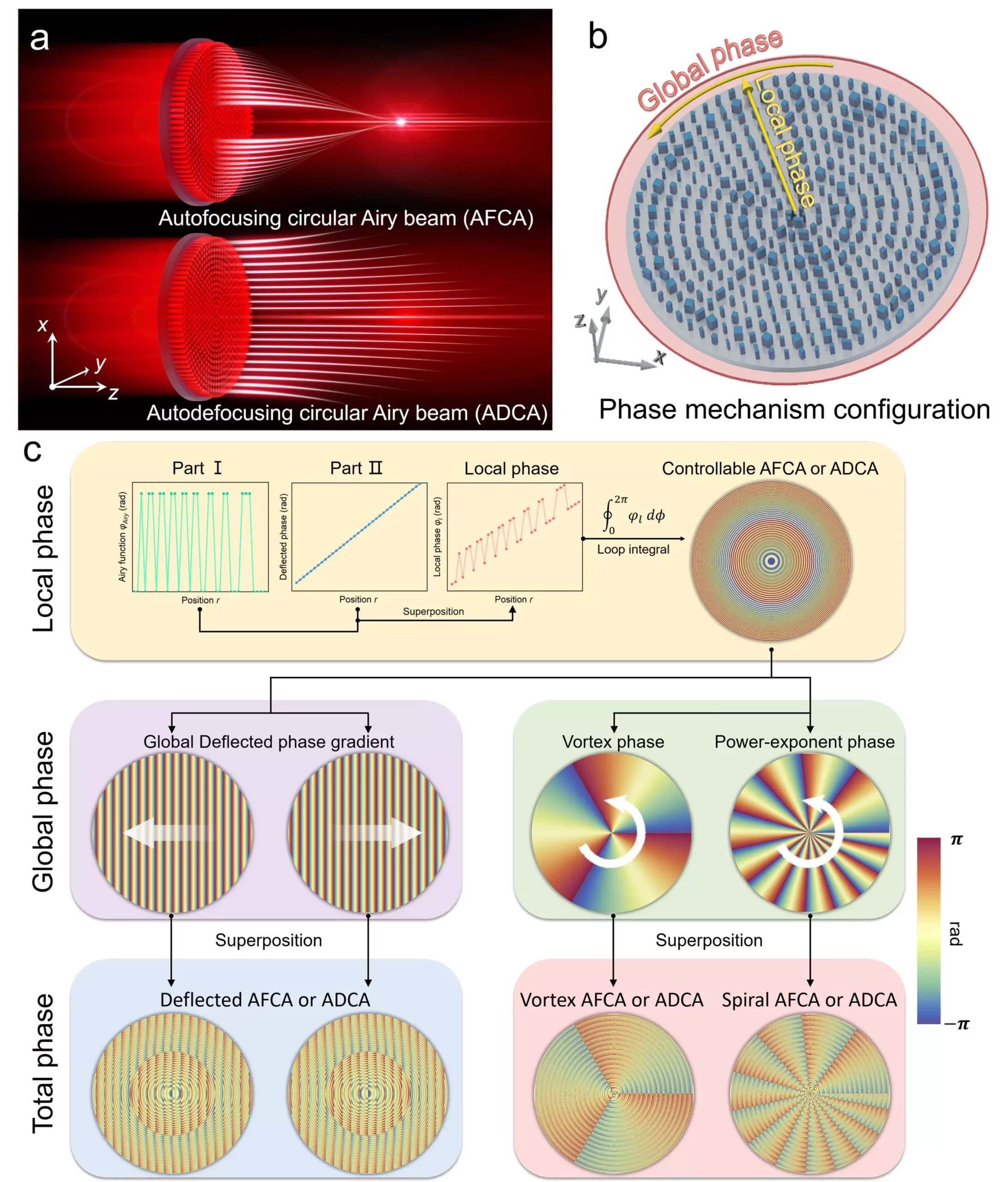The diffraction of light is a fundamental phenomenon in nature, where waves spread out as they propagate. This spreading of light beams during propagation can limit the efficient transmission of energy and information. Scientists have long been working to suppress diffraction effects in order to maintain the shape and direction of light beams. In recent decades, significant breakthroughs have been made in the field of controlling the structure of light, leading to the development of non-diffracting light fields.
In 1979, Berry and colleagues predicted the existence of Airy beams (ABs), which exhibit self-acceleration and self-bending without diffraction. This was a major advancement in the field of optics. Subsequently, in 1987, J. Durnin realized Bessel beams (BBs), a special solution to the wave equation that can suppress diffraction effects. These discoveries have significantly advanced both fundamental optics and practical applications.
While the concept of non-diffracting light fields is promising, devices for modulating these fields have traditionally been bulky and had limitations such as low resolution and difficulty in encoding the phase profile. However, the development of metasurfaces has brought a new dimension to this field. By using the precise arrangement of nanoscale antenna arrays, metasurfaces can miniaturize optical devices and achieve multidimensional control of light fields through birefringence.
A recent research study has made significant progress in modulating non-diffracting light fields. The study successfully reconstructed non-diffracting light fields along the propagation path, observing the natural transformation of circularly Airy beams (CABs) into Bessel beams (BBs) after propagating a certain distance. This breakthrough was made possible by a novel mechanism of joint local-global phase control, enabling the modulation of complex optical fields.
The researchers decomposed the 2D problem into the integration of 1D phase functions and the superposition of 2D phase functions. This process was vividly illustrated using theoretical analysis and ray tracing techniques. By leveraging the potential of triple birefringent nanoantennas, the researchers introduced new techniques for structuring light fields, doubling the number of light field types. Furthermore, the researchers demonstrated the high tolerance of their device to manufacturing defects.
This research represents a pivotal step in the use of non-diffracting light fields and enhancing the multifunctionality of metasurfaces. It lays a solid foundation for the advancement of advanced on-chip, nano-optical platforms and innovative manufacturing technologies. The implications of this research are significant for the development of optical technology, driving optical device performance and functionality to new heights.



Leave a Reply